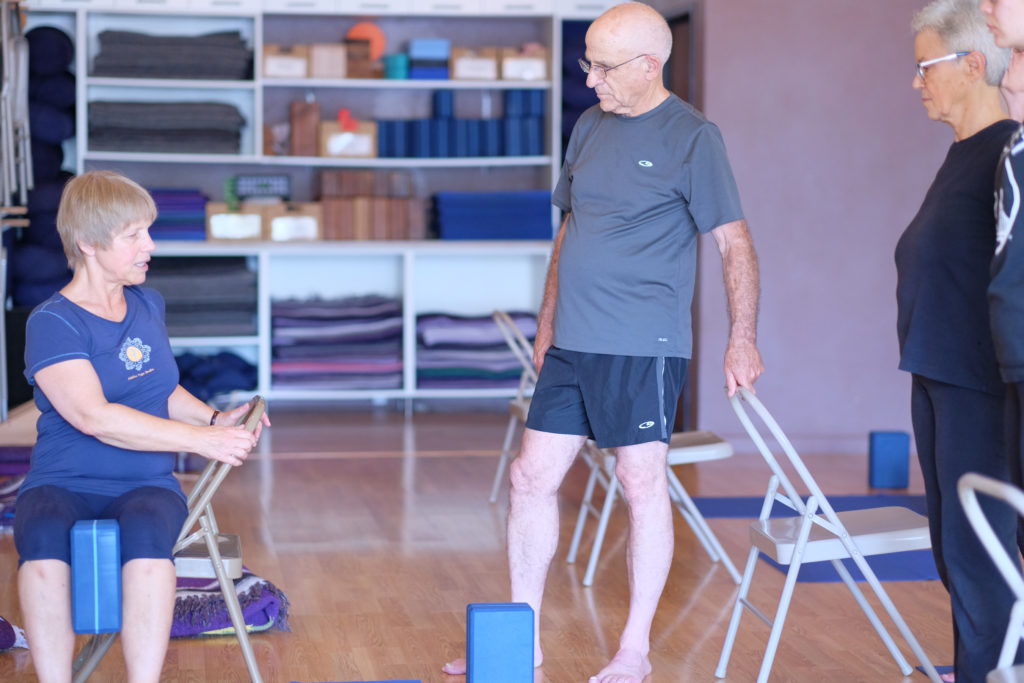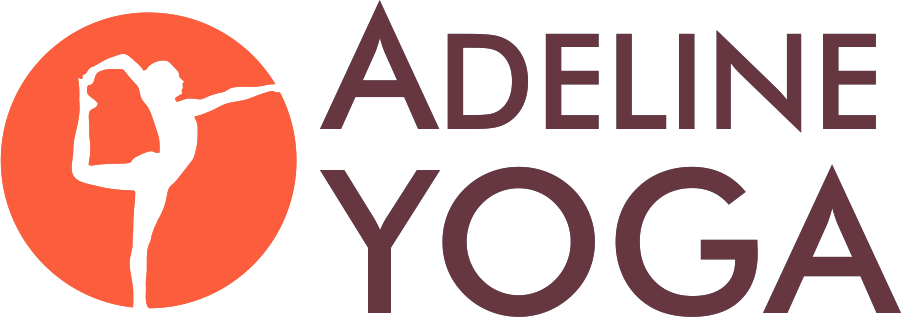 by Sarah Harvey
by Sarah Harvey
“I was just diagnosed with osteoporosis, and my doctor is recommending medication to treat it. What should I do?”
As a yoga teacher of a certain age, I hear this question on a regular basis from students, friends and family. Although I am not a licensed medical professional, I do know that a regular yoga practice can help alleviate risks associated with this condition. In fact, Iyengar yoga is exactly what the doctor ordered – Dr. Loren Fishman, that is. I just completed a 40-hour yoga teacher training with Dr. Fishman. Throughout this workshop, he and co-leader Ellen Saltonstall emphasized the importance of correct posture and body alignment, mindful muscular effort, and consistent daily practice. Sounds familiar, doesn’t it?
Back to the question at hand. If you or someone you know is facing the prospect of taking medication to treat osteoporosis, it may be helpful to look at a side-by side comparison of the benefits of yoga and medication. There are currently 4 major classes of drugs approved to treat osteoporosis. For simplicity’s sake this chart only includes bisphosphonates—the most widely known, and commonly prescribed class of osteoporosis meds. This drug category includes FOSAMAX®, BONIVA®, and ACTONEL®, among others.
| Benefits | Medications | Yoga |
| Increases bone mineral density | Yes1 | Yes2 |
| Builds physical strength & stamina | No | Yes |
| Improves balance & coordination | No | Yes |
| Develops better posture | No | Yes |
| Enhances flexibility & range of motion | No | Yes |
| Relieves stress & anxiety | No3 | Yes |
1 Some patients experience bone loss after taking these types of medications over a long period of time (e.g. more than 5 years)
2 DEXA scan results improved for over 80% of the participants in Dr. Fishman’s recently-concluded study on Yoga as a treatment for osteoporosis and osteopenia
3 Anti-anxiety medications can have a negative impact on balance and coordination
It’s important to bear in mind that with osteoporosis it’s not necessarily the poor quality of the bones that’s the source of concern. The real problem is the risk of broken bones associated with this condition. Fractures of the femur (thigh bone), pelvis and wrists result mostly from falls. Compression fractures in the spine can occur spontaneously, and are often linked to hyperkyphosis, or excessive rounding and muscle weakness in the upper back. A regular yoga practice helps prevent both these types of bone fractures. Strengthening the back extensor muscles and developing better posture reduces the likelihood of compression fractures in the spine. Improving balance, coordination and confidence helps people avoid falls.
Certainly there are situations where taking medication to treat osteoporosis is absolutely the right thing to do. This is especially true for someone whose DEXA scan T-scores are – 3 or worse. But of course, taking these drugs does not preclude one from also practicing yoga.
The Yoga for Osteoporosis Workshop I’m teaching at Adeline Yoga grew out of my experience teaching yoga to older students, many of whom have been diagnosed with osteoporosis. Offering the yoga community another tool to deal with its symptoms and consequences is a blessing to me, and I hope will provide added motivation to come to the mat.
Yoga for Osteoporosis Workshop, Saturday, August 19, 1:00-3:30
Sarah Harvey is a certified Iyengar yoga instructor, CIYT-1000. A 2004 graduate of the 500-hour Advanced Studies/Teacher Training Program at the Iyengar Yoga Institute of San Francisco, she has studied and practiced yoga for over 20 years, and has taught yoga for over 10 years. Sarah brings a light, humorous approach to her teaching, combined with direct, detailed instructions for each student. Although yoga is central to her life and key to her well being, she is also an avid sports fan (Go A’s!), and enjoys gardening and gourmet cooking.
